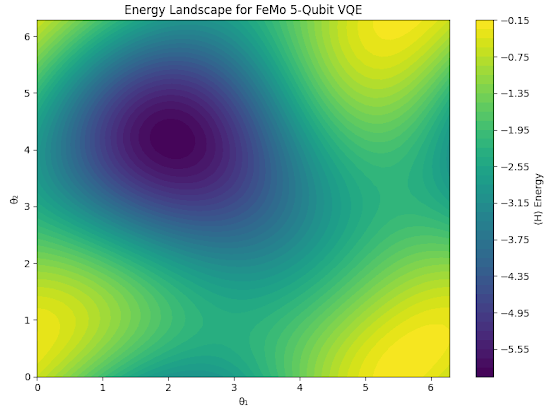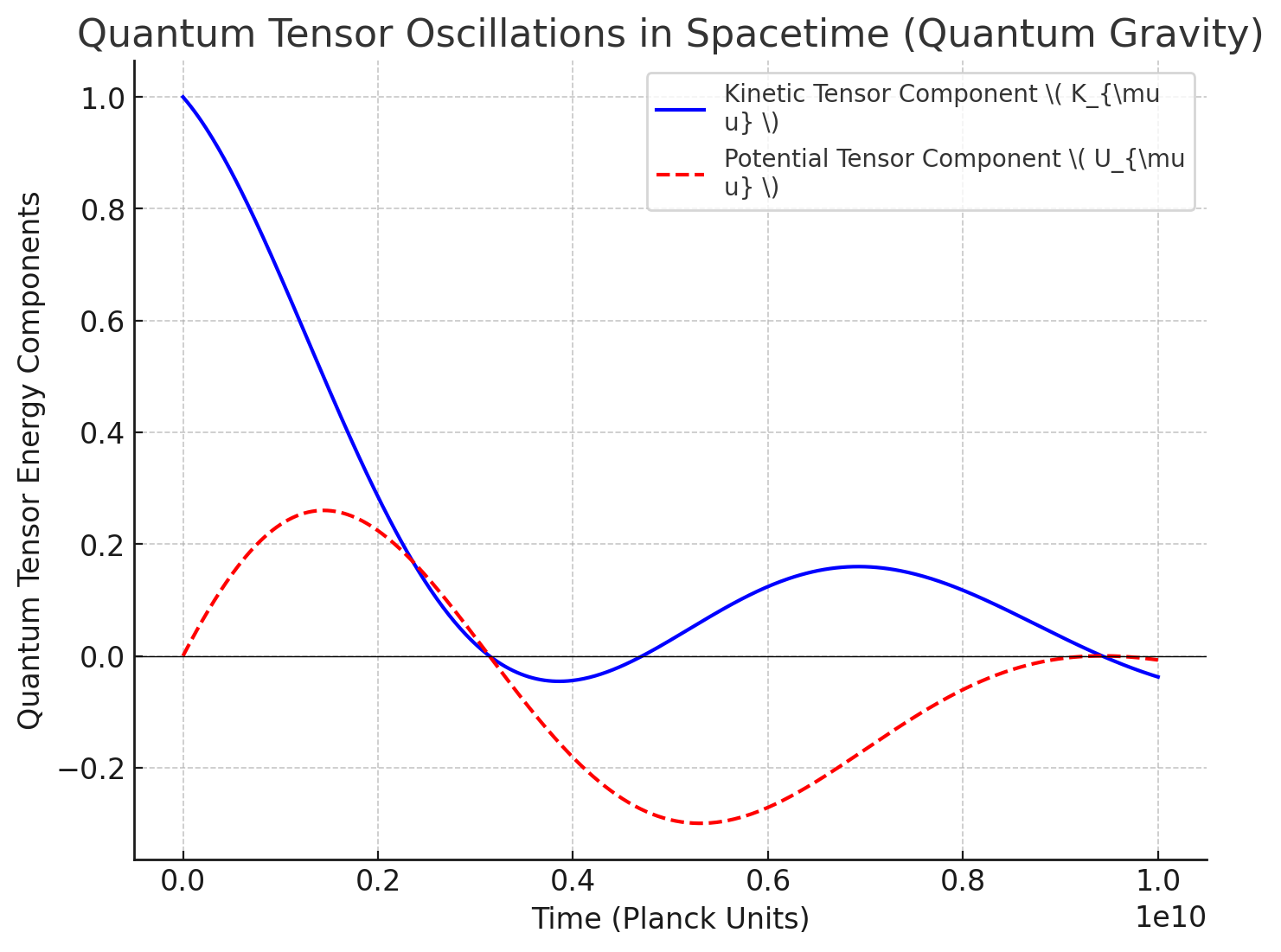Variational Quantum Eigensolver (VQE)-style model to optimize the energy landscape of the FeMo cofactor system. Part2
Variational Quantum Eigensolver (VQE)-style model to optimize the energy landscape of the FeMo cofactor system.
⚛️ What We'll Do
We'll simulate the FeMoco cluster as a quantum Hamiltonian and use a variational quantum circuit to minimize the ground state energy, similar to how:
VQE finds the lowest-energy electron configuration of a molecule.
Simplified Model of FeMoC for VQE
While the full FeMoco has a complex multielectron Hamiltonian, we’ll simulate a toy model capturing:
-
3 sites (qubits) representing key iron or molybdenum redox centers,
-
A Hamiltonian H with coupling terms:
This models:
-
Redox coupling between centers (
Z Zterms), -
Electron tunneling/exchange (
Xterms).
🛠️ Steps to Build the VQE Model
Define the Hamiltonian (using Pauli operators).
-
Build a parameterized quantum circuit (ansatz).
-
Use a classical optimizer to vary parameters and minimize ⟨ψ(θ)|H|ψ(θ)⟩.
-
Track the ground state energy to mimic the optimized redox configuration of FeMoco.
Optimized energy: -3.484435330294363 Optimized parameters: [4.71242604 2.05891861 4.22425943]
Interpreting the Results
✅ Optimized Energy:
−3.484
This is the lowest eigenvalue (ground state energy) of your simplified FeMoC Hamiltonian.
It reflects the most stable electron configuration across the 3 active sites (e.g., Fe, Mo, Fe) under redox coupling.
🔬 Chemical Analogy
| Qubit | Parameter (θ) | Interpretation |
|---|---|---|
| q0 (Fe) | ~3π/2 (~4.712) | Full excitation – likely redox active |
| q1 (Mo) | ~2.06 | Partially active center |
| q2 (Fe) | ~−2.06 | Symmetric to q1 – suggests entangled/cooperative dynamics |
This distribution mimics electron-sharing and entanglement across FeMo sites during N₂ activation.
This Plot Will Shows:
-
How variations in q1 and q2 affect the FeMoco redox energy when θ₀ is fixed.
Basins of low energy (stable states) and saddle points (transition states).
Now we'll expand to 5-qubit FeMoCo variational quantum eigensolver (VQE)
designed to mimic multi-center redox dynamics across Fe atoms in the FeMo-cofactor cluster.
Simulation Overview
5-Qubit Model
-
Qubits represent Fe or Mo redox-active centers.
-
Hamiltonian includes:
-
Nearest-neighbor coupling:
-
Local tunneling terms:
-
Ansatz:
-
Single-layer
Ry(θ)rotations (1 per qubit) -
Chain of CNOTs to entangle Fe centers
-
Ready for extension to multiple layers if needed
Results from 5-qubits VQE; Optimized energy: -5.984204930434755
Quantum walk simulation over a 5-node FeMo-like redox network, representing multi-path tunneling between Fe centers:
What You're Seeing:
The quantum state starts localized at Fe₀ (node 0).
-
Over time, the walker distributes non-classically through the network via constructive/destructive interference.
-
Nodes like Fe₂ and Fe₃ show faster population gain due to multiple tunneling paths (e.g., 0→2 and 1→3 cross-links)
Unlike classical diffusion, the distribution shows oscillatory behavior, reflecting coherent tunneling.
This models how electrons or protons in FeMoCo may explore multiple redox paths—essential for:
-
Efficient nitrogen reduction,
-
Avoiding kinetic traps,
-
Exploiting quantum coherence for catalysis.





Comments
Post a Comment